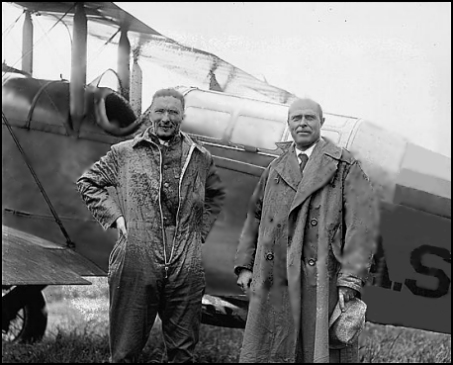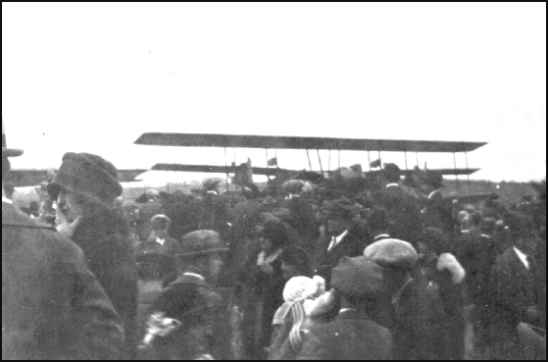
 |
| Lt. Harold R. Harris & N.Y. Congressman Fitzgerald August 14, 1922 Library of Congress Collection. |
PROGRAM OF EVENTS |
 |
||
|
the largest heavier-than-air flyer ever built. Flown by Lieut. Harold R. Harris |
 |
||
|
At the 1923 Saint Louis International Air Meet Collection of Roy Nagl, 1-23-06 |
Rotogravure Picture Section, September 30, 1923 |
|
The arrival of the Barling Bomber at the St. Louis airport was in a way the most remarkable event of a week's crowded aerial demonstrations. To say that this six-engined triplane is huge, does not in the least convey the impression it creates on the ground or in flight. "monumental" would perhaps best express it. The Barling Bomber remained at the St. Louis airfield throughout the week, stupefying the thousands who inspected it. The pride of the Army weighed 27,132 pounds empty, and with its gross weight of 42,569 pounds it could reach 95.5 miles per hour. The ship cost $500,000 to construct and, like the Shenandoah,required a special hangar at a cost of $700,000. Little flying was done after its maiden flight on August 22, 1923, however, because when officials in Washington requested that it be flown a mere 400 miles from Dayton, Ohio, to the capital for exhibition purposes, the bomber was unable to climb high enough to clear the Appalachian Mountains. After lying in disrepair for five years, the Barling was surreptiously destroyed in 1928 at the order of General H. H. Arnold so that no public outcry would be made over the million-dollar waste of taxpayer's money. |
 |
| Lt. Harold R. Harris. |
|
"MAIDEN DETROIT" STOUT METAL AEROPLANE CO. DETROIT, 1924 |

|
||
| The completed Liberty-engined Stout plane. The first one was dubbed the Maiden Dearborn This is the second one, known as the Maiden Detroit. |
|
At 2:30 o'clock, the plane took off for Detroit on the return trip. It is to be brought back to McCook field and subjected to army tests at a later date. The flight to Dayton Wednesday was the first cross-country trip ever made by the Stout plane. Most of the distance was covered at an altitude of approximately 3000 feet and the passengers aboard declared they could see the rain below, although they were not in it themselves. All members of the aerial cruising party said the trip was delightful, being devoid of the rocky, jumpy sensation usually accompanying an airplane trip loaded so heavily. The Stout plane is powered with one Liberty motor and has a normal speed of more than 110 miles an hour with full load. It was given its preliminary tests by Walter E. Lees, pilot for the Johnson Airplane and Supply Co. |
 |
This cover is autographed by Harold R. Harris Collection of Roy Nagl, 4-20-05 |
|
The second case was at Seattle, Washington, during the test of a MB3A pursuit ship. The plane lost a wing and Lieut. Frank B. Tyndall floated to safety. Lieut. Eugene Barksdale, of McCook field, saved his life in this manner just a month ago at Wilbur Wright field when the controls of a Boeing observation plane snapped throwing the ship into a nose dive. Several days ago, Lieut W. W. White, of Kelly field, San Antonio, Texas, jumped to safety with his parachute after colliding with another plane. Walter E. Lees is the first commercial flier to owe his life to a parachute. He was using a borrowed chute from McCook Field when the German LVG he was testing became unmanageable. He jumped at a height of 150 feet and landed safely. just click on" Walter E. Lees |


|